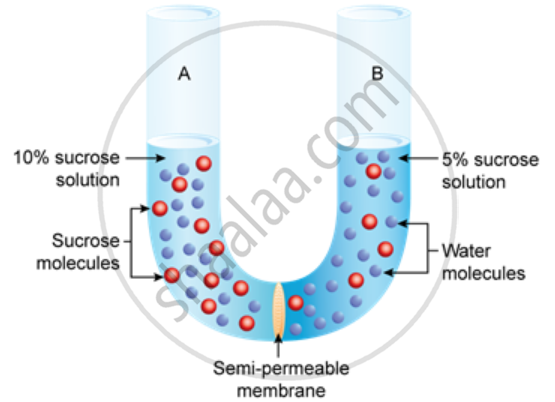Advertisements
Advertisements
Question
Explain the mechanism of closing and opening of the stomata.
Solution
The closing and opening of the stomata depends on the turgidity of the guard cells. Each guard
cell has a thicker wall on the side facing the stoma and a thin wall on the opposite side. Guard cells contain chloroplasts. As a result of the synthesis of glucose during photosynthesis and some other chemical changes, the osmotic pressure of the contents of the guard cells increases and they absorb more water from the neighbouring cells, thus becoming turgid. Due to turgor, the guard cells become more arched outwards and the aperture between them widens, thereby opening the stoma.

At night or when there is shortage of water in the leaf, the guard cells turn flaccid and their inner rigid walls become straight, thus closing the stomatal aperture.
APPEARS IN
RELATED QUESTIONS
Concentration of mineral nutrient elements is higher inside the root hairs than in the surrounding soil. How do roots take them in from the soil?
Choose the correct answer:
Wilting of plants occurs when ____________
The diagram below represents a layer of epidermal cells showing a fully grown root hair. Study the diagram and answer the questions that follow:

Draw a diagram of the above root hair cell as it would appear when a concentrated solution of fertilizers is added near it.
Study the experimental setup in the figure and then answer the question that follow.

What will you observe in the setup after about half an hour? Give reasons for your answer.
The diagram given below represents the result of an experiment conducted on two freshly taken shoots of a green herbaceous plant. The lower ends dip in the water.

(i) What is the aim of the experiment?
(ii) Some parts of the stem in both the shoots have been removed. Name the conducting tissue in shoot A and in shoot B, that has been removed.
(iii) What are the results of this experiment?
Multiple Choice Question:
The most widely accepted theory for ascent of sap is ______.
Define: Root hair
____________ regions are present in a typical root.
Which of the following are the components of cell wall of root hair?
Which part of the root helps in maximum absorption of water and minerals?
